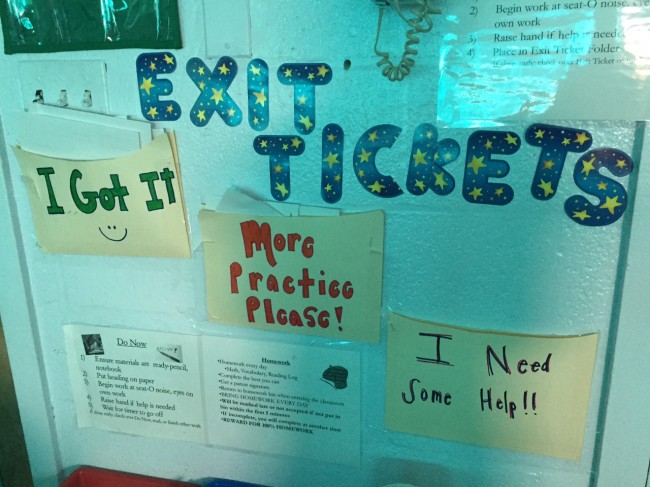The idea for this post comes from Leanne Riordan, who teaches at Holabird Academy in Baltimore. She shares some ideas for exit tickets that her colleagues use to include a level of self-monitoring and self-reflection.
She writes:
I’d like to chime in to the exit ticket conversation with an idea to encourage student reflection and develop metacognition in conjunction with the exit ticket. In my school I’ve noticed some teachers have the students turn their exit tickets into bins, based on the students’ own perception of their understanding. One bin might be something like “I’ve got this!” while another is labeled “More practice please.” In between could be “I need some help” or “I’m almost there.”
In addition to helping the students be more mindful about their outcomes at the end of the lesson, I think these piles can also help with buy-in later when you pull a group for corrective teaching. The teacher should reference that the students in the small group did not answer correctly, and they also asked for help. Or, if most of the class said they needed help, the teacher could open the next lesson with a connection to this purpose. Something like, “I noticed that most of the class asked for more help with __, so we are going to spend 10 minutes going over it again, in a different way that will help you understand it better.”
I also think it would be interesting to compare how the students rated their understanding vs. their actual performance. Are some overconfident, or not confident enough? Are the students able to correctly assess their level of knowledge or ability to problem solve? How do the student-created piles compare to the scored piles?
I am attaching a photo example from Erika Savage’s third grade classroom.
